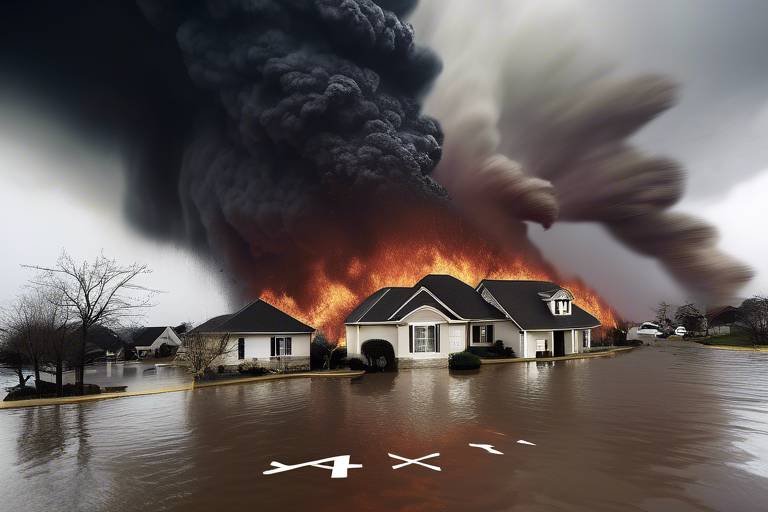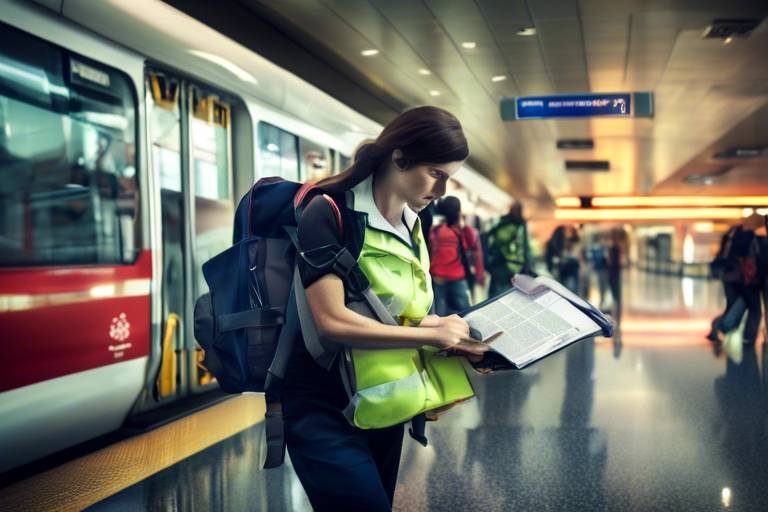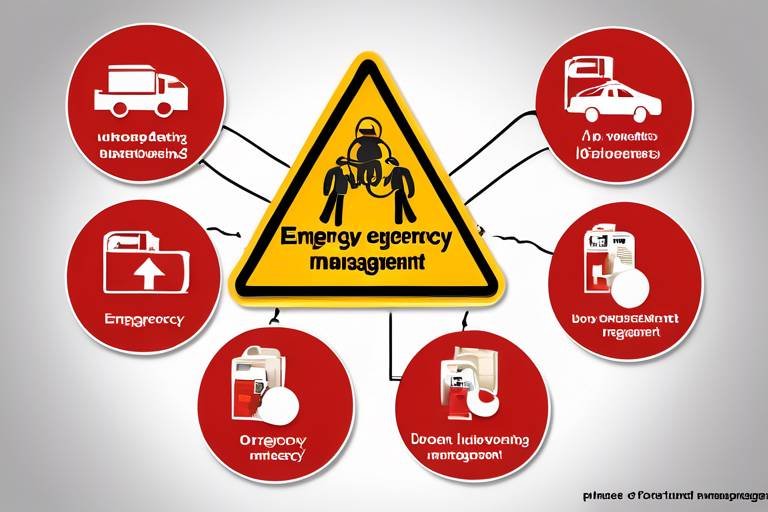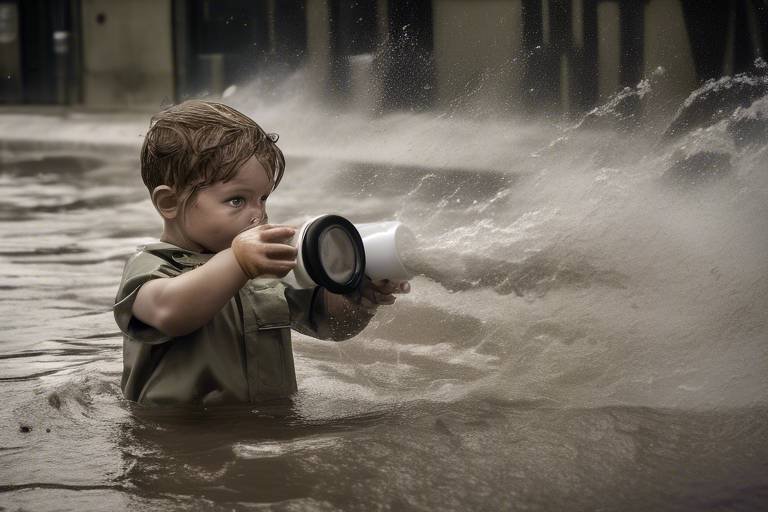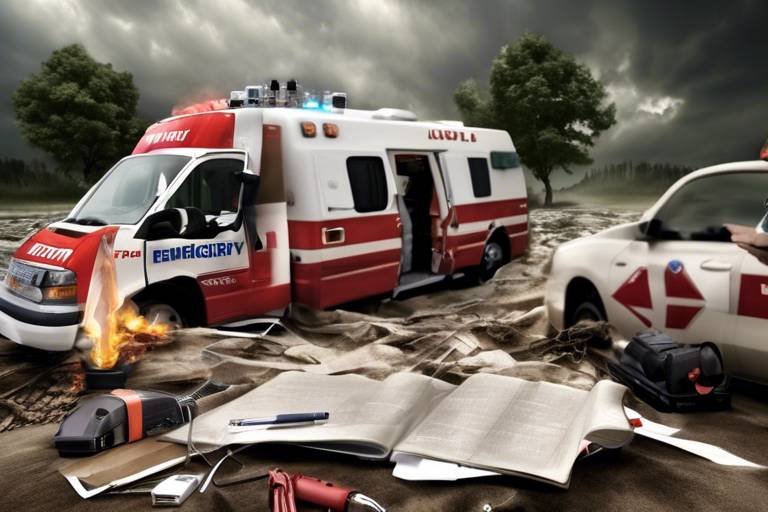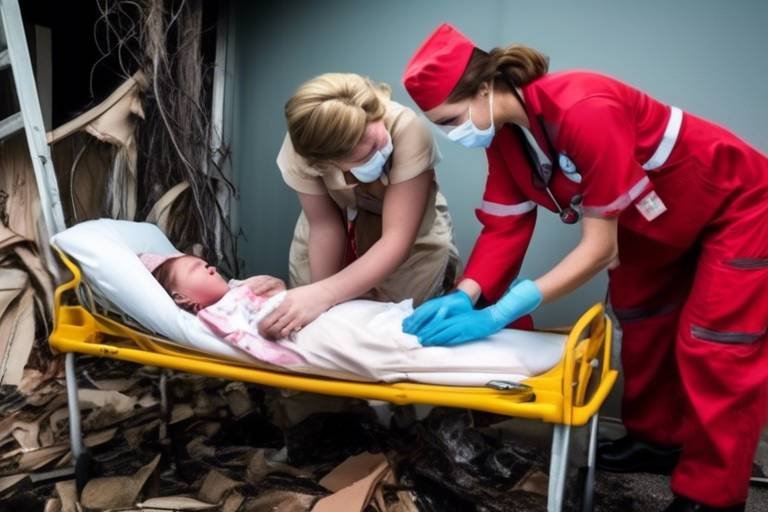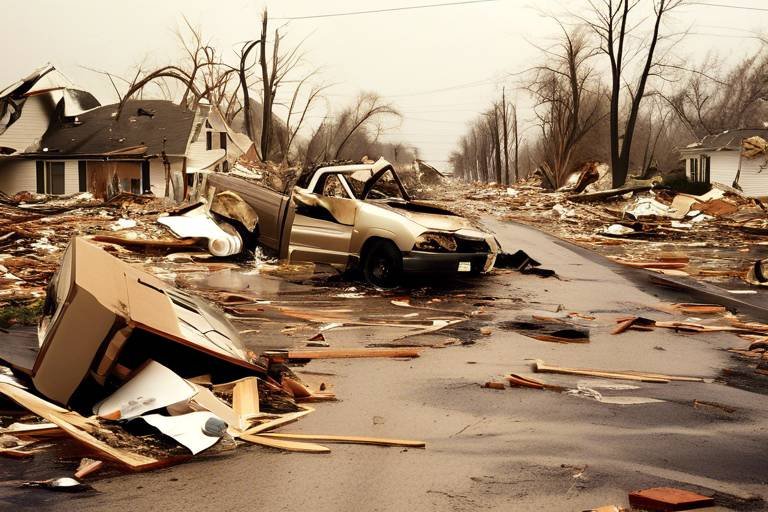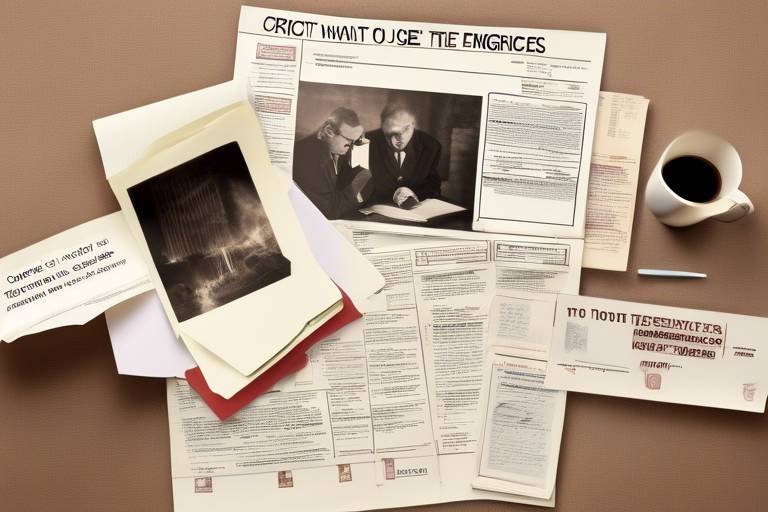Keeping Your Finances Safe During a Natural Disaster
Natural disasters can strike without warning, leaving a trail of destruction and chaos in their wake. When the winds howl and the waters rise, the last thing you want to worry about is your finances. That's why it's crucial to have a solid plan in place to protect your financial assets. In this article, we'll explore essential strategies that can help you safeguard your economic stability during such tumultuous times. From preparation and insurance to post-disaster recovery, we’ll cover everything you need to know to keep your finances intact when disaster strikes.
When we talk about natural disasters, we often think of the immediate physical damage they cause. However, the financial implications can be just as devastating. Whether it's a hurricane, earthquake, or flood, the potential for significant financial losses is ever-present. Understanding these risks is the first step in effective preparation. Think of it like building a fortress; the more you know about the threats, the better you can fortify your defenses. Financial risks can include property damage, loss of income, and unexpected expenses. By recognizing these threats, both individuals and businesses can take proactive measures to safeguard their finances against potential disasters.
An emergency fund is your financial life raft during crises. It acts as a buffer, providing you with the necessary resources to cover unexpected expenses when disaster strikes. Building and maintaining an emergency fund specifically tailored for natural disaster scenarios is not just smart; it’s essential. Imagine having a stash of cash that you can easily access when you need it the most. But how do you go about creating this safety net? Let’s dive into the nitty-gritty of setting savings goals and contributing regularly to your fund.
Establishing realistic savings goals is vital for creating an effective emergency fund. Think of it as mapping out a journey; without a destination, you may end up wandering aimlessly. Start by assessing your financial situation and determining how much money you would need to cover essential expenses for at least three to six months. This amount can vary based on your lifestyle, family size, and location. Once you have a target in mind, break it down into achievable milestones. For instance, if you aim to save $6,000, you could set a goal of saving $500 each month. This way, you can track your progress and stay motivated.
Regular contributions to your emergency fund can accumulate over time. Think of it like planting a tree; the more you nurture it, the stronger it grows. Set up automatic transfers from your checking account to your emergency savings account each month. This way, you won't even have to think about it! Additionally, consider cutting back on non-essential expenses, such as dining out or subscription services, to boost your savings. Every little bit helps, and before you know it, you'll have a robust emergency fund ready to support you when disaster strikes.
In emergencies, quick access to funds is essential. Imagine being in a dire situation where you need cash urgently, but it’s locked away in a complicated investment account. To avoid this, ensure that your emergency savings are kept in a high-yield savings account or a similar financial vehicle that allows for easy withdrawals. You might also consider having a portion of your emergency fund in cash at home, but be cautious—keeping too much cash on hand can be risky. The key is to strike a balance that allows you to access your funds rapidly while also earning some interest.
Proper insurance coverage can significantly mitigate financial losses during natural disasters. It's like having a safety net that catches you when you fall. Different types of insurance policies can protect your home, vehicle, and even your income. Homeowners or renters insurance typically covers damage to your property, while flood insurance is essential in high-risk areas. Additionally, consider looking into business interruption insurance if you're a business owner. Evaluating your current coverage regularly ensures that you’re not underinsured and that your policies meet your evolving needs.
Keeping records of important financial documents is crucial during a disaster. In the chaos that follows a natural disaster, the last thing you want is to scramble through piles of paperwork. Organizing and securing your financial information for easy access can save you a lot of headaches. Create a digital folder on a secure cloud service and keep copies of essential documents like insurance policies, bank statements, and identification. This way, even if your physical documents are lost, you can still access the information you need.
Deciding between digital and physical copies of documents can impact accessibility. Digital copies are easy to store and access from anywhere, but they can also be vulnerable to cyber threats. On the other hand, physical copies are tangible but can be destroyed in a disaster. A balanced approach is best. Keep critical documents in both formats. For instance, save your insurance policy digitally and also keep a physical copy in a fireproof safe. This dual strategy ensures that you have access to your important information no matter what happens.
Regularly reviewing and updating your financial documents ensures they remain accurate and relevant. Life changes, and so should your financial records. Set a reminder to check your documents at least once a year. Look for changes in your financial situation, such as new assets, changes in income, or adjustments in your family size. Keeping your records up to date not only helps in emergencies but also gives you a clearer picture of your overall financial health.
Recovering financially after a disaster can be challenging, but it's not impossible. Think of it as rebuilding a house after a storm; it takes time, patience, and a solid plan. Start by creating a budget that reflects your new financial reality. Identify essential expenses and prioritize them. Don't hesitate to seek assistance—local organizations and government programs often provide financial aid to those affected by disasters. Lastly, re-evaluate your financial plan to ensure that it aligns with your current needs and future goals.
- What is the best way to prepare financially for a natural disaster?
Start by building an emergency fund, reviewing your insurance coverage, and organizing important documents. - How much should I have in my emergency fund?
Ideally, aim for three to six months' worth of living expenses. - Can I access my emergency fund anytime?
Yes, your emergency fund should be easily accessible for unexpected expenses. - What types of insurance do I need for natural disasters?
Consider homeowners or renters insurance, flood insurance, and business interruption insurance if applicable.
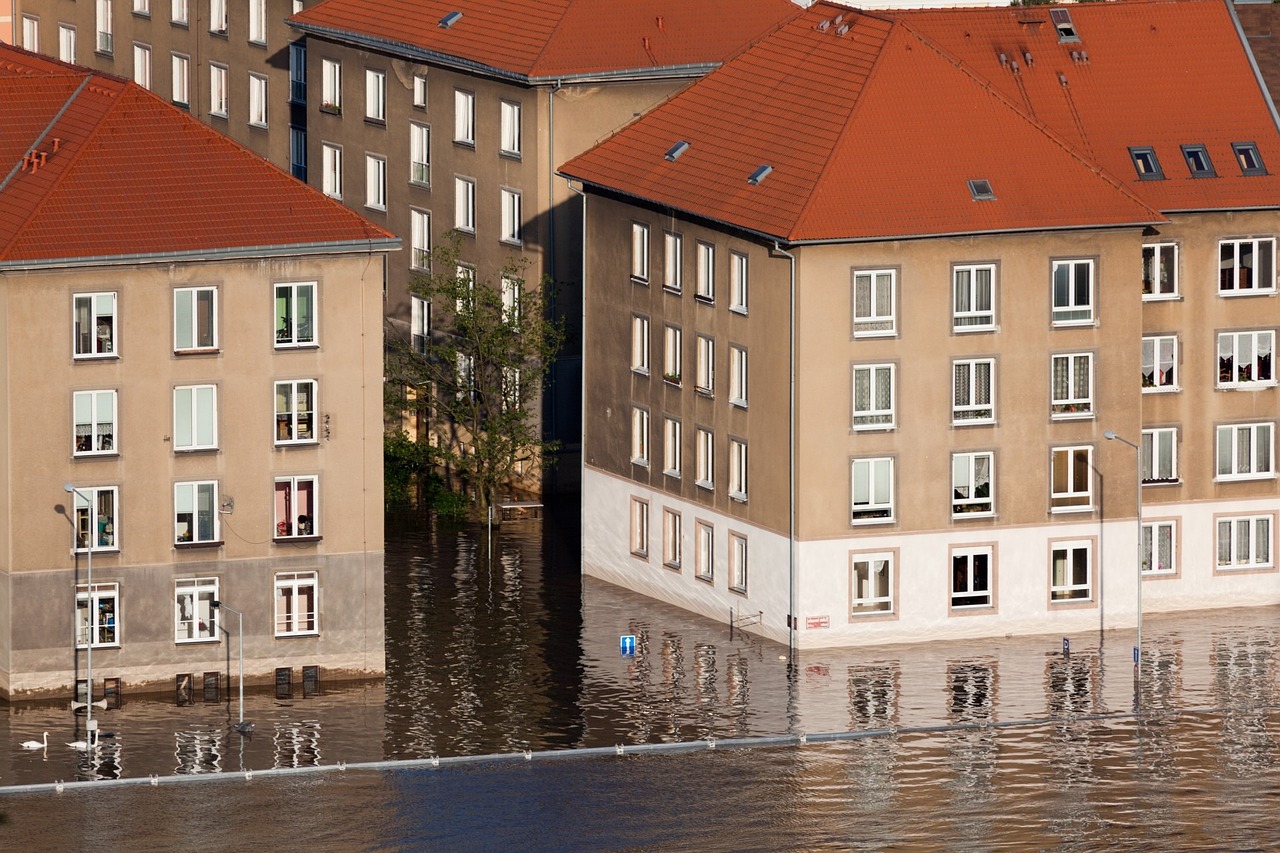
Understanding Financial Risks
Natural disasters can strike without warning, leaving a trail of destruction that can wreak havoc on your finances. Whether it's a hurricane, earthquake, flood, or wildfire, the **financial implications** can be devastating. Understanding these risks is crucial for effective preparation and response. Think of it like standing in front of a storm; if you know it's coming, you can take shelter. But if you ignore the signs, you might find yourself caught in the downpour, both literally and financially.
One of the most significant risks during a natural disaster is property damage. This includes not just your home but also your personal belongings, vehicles, and even business assets. The cost of repairs or replacements can be astronomical, and without proper planning, you might find yourself in a precarious situation. For instance, imagine losing your home and all your possessions overnight. How would you cope? This is why understanding the financial risks involved is essential.
In addition to property damage, there are other financial risks to consider, such as:
- Loss of Income: If a disaster forces you to evacuate or if your workplace is damaged, you may face a temporary or even permanent loss of income. This can lead to difficulties in meeting everyday expenses.
- Increased Living Expenses: After a disaster, you may need to find temporary housing or pay for additional essentials, which can strain your finances.
- Medical Expenses: Injuries sustained during a disaster can lead to unexpected medical bills, adding another layer of financial strain.
Moreover, businesses face unique challenges during natural disasters. They might experience disruptions in operations, loss of inventory, or even damage to their physical locations. The **financial ramifications** can be severe, leading to long-term impacts on cash flow and profitability. A business that can’t operate for weeks or months might not survive the aftermath, which is a sobering thought for any entrepreneur.
To effectively safeguard your finances, it’s essential to conduct a thorough risk assessment. Consider factors such as your geographic location, the types of disasters that are most likely to occur, and your current financial situation. This will help you identify potential vulnerabilities and develop a comprehensive disaster preparedness plan. Think of it as creating a financial safety net; the stronger the net, the better you can bounce back after a fall.
In conclusion, understanding financial risks associated with natural disasters is not just about acknowledging the potential for loss; it’s about taking proactive steps to mitigate those risks. By preparing in advance, you can protect your assets and ensure that you’re ready to weather any storm that comes your way.

Emergency Fund Essentials
When it comes to safeguarding your finances during a natural disaster, having an emergency fund is like having a safety net beneath you while you walk a tightrope. It's that financial cushion that can help you bounce back when life throws its worst at you. But how do you build and maintain this essential fund? Let’s dive into the nitty-gritty of creating an emergency fund tailored specifically for disaster scenarios.
First off, it’s important to understand that an emergency fund isn't just a rainy-day fund; it’s your lifeline during a storm. Ideally, your emergency fund should cover at least three to six months of living expenses. This means you need to sit down and calculate your monthly costs, including essentials like rent or mortgage, groceries, utility bills, and any other recurring payments. Once you have a clear picture, you can start setting savings goals that align with your financial situation and the potential impact of a disaster.
Setting realistic savings goals is crucial for creating an effective emergency fund. Think of it as a marathon, not a sprint. You wouldn't expect to run 26.2 miles without training, right? Similarly, you shouldn’t expect to build a substantial emergency fund overnight. Start small, and gradually increase your contributions as you find ways to cut costs or boost your income. For example, if you aim to save $6,000 for your emergency fund, you could break it down into manageable monthly targets. Here’s a simple formula:
| Time Frame | Monthly Savings Goal |
|---|---|
| 1 Year | $500 |
| 2 Years | $250 |
| 3 Years | $167 |
As you can see, breaking down your total savings goal into smaller, achievable monthly contributions makes it feel less daunting. Plus, it gives you a clear path to follow!
It's essential to make regular contributions to your emergency fund. Just like watering a plant, consistent care will help it grow. Set up an automatic transfer from your checking account to your emergency fund each payday. This way, you’re paying yourself first, ensuring that you’re consistently building that financial buffer. You might be surprised at how quickly your savings can accumulate when you make it a habit!
In the unfortunate event that disaster strikes, having quick access to your emergency funds is crucial. Think about where you keep your money. Is it in a high-yield savings account that you can access easily? Or is it tied up in investments that take time to liquidate? Ideally, you want your emergency fund to be in a place where it’s both safe and easily accessible. Consider keeping a portion of your emergency savings in cash or a separate savings account dedicated solely to emergencies. This way, you can grab what you need without delay.
In conclusion, building an emergency fund is a vital step in protecting your financial future during natural disasters. By setting realistic savings goals, making consistent contributions, and ensuring easy access to your funds, you can create a financial safety net that provides peace of mind when you need it most.
- How much should I have in my emergency fund? Aim for three to six months' worth of living expenses.
- Where should I keep my emergency fund? Consider a high-yield savings account for easy access and growth.
- Can I use my emergency fund for non-disaster expenses? It's best to reserve it strictly for emergencies to ensure it's available when needed.
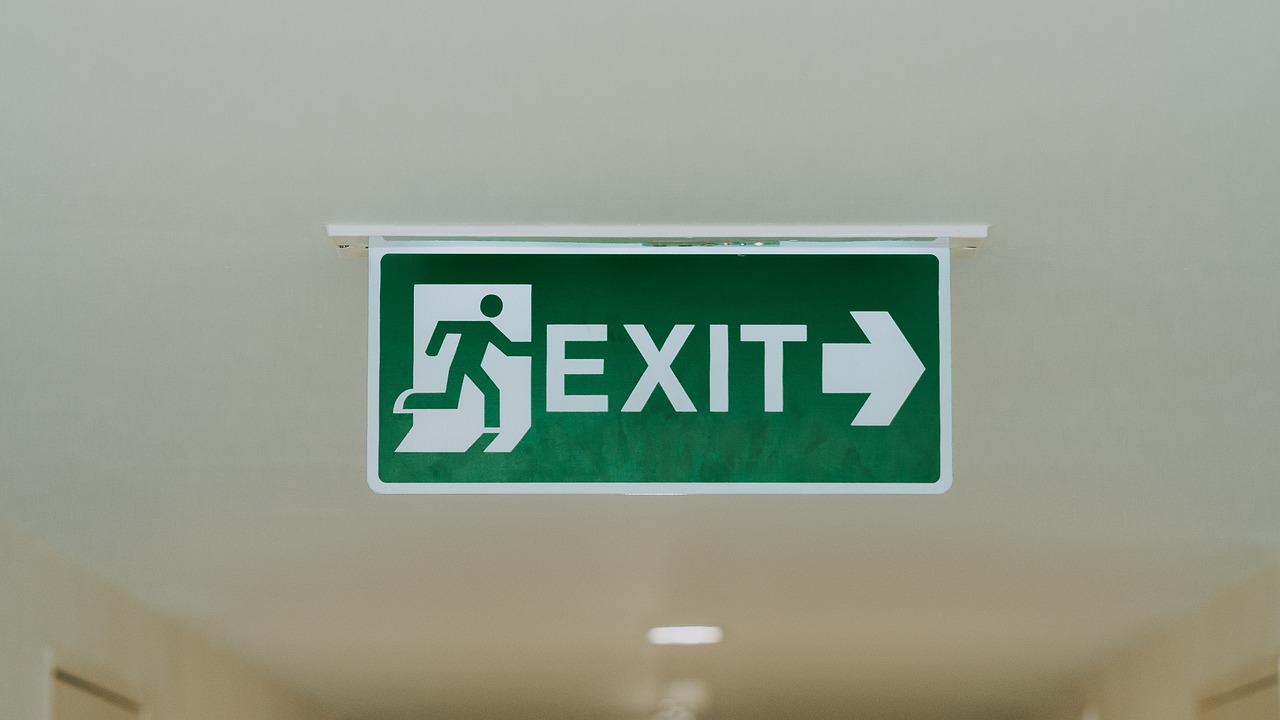
Setting Savings Goals
Setting savings goals is like laying the foundation for a house; without a solid base, everything else can come tumbling down. When it comes to preparing for natural disasters, having clear and realistic savings targets is essential. It’s not just about stashing away cash; it’s about creating a safety net that can cushion the financial blow when the unexpected happens. So, how do you go about setting these goals? Let’s break it down.
First off, assess your current financial situation. Take a good hard look at your income, expenses, and existing savings. This will give you a clear picture of where you stand. You might find that you can save a little more than you thought, or perhaps you need to tighten your belt a bit. Once you have a grasp on your finances, consider the potential costs associated with a natural disaster. Think about things like:
- Emergency repairs to your home
- Temporary housing costs
- Replacement of essential items
- Medical expenses
Next, it’s time to set specific savings targets. Instead of saying, “I want to save more,” try to determine exactly how much you want to save. For example, if you think you might need $5,000 to cover potential expenses, that’s a solid target. Now, break it down into manageable monthly contributions. If you plan to reach that goal in a year, you’ll need to save about $417 each month. Sounds doable, right?
But life can throw curveballs, and sometimes those monthly contributions might feel like a stretch. Don’t be discouraged; it’s all about flexibility. If you can’t hit that target one month, adjust your plan instead of giving up entirely. Remember, the goal is to build a habit of saving, not to stress yourself out over numbers.
Lastly, keep your goals visible. Write them down and place them somewhere you’ll see them regularly, like on your fridge or in your planner. This serves as a constant reminder of why you’re saving and helps keep you motivated. Think of it as a lighthouse guiding you through the stormy seas of financial uncertainty.
In conclusion, setting savings goals is a crucial step in preparing for natural disasters. By assessing your finances, establishing specific targets, and staying flexible, you can create a robust emergency fund that helps you weather any storm. Remember, it’s not just about the money; it’s about peace of mind knowing that you’ve taken steps to protect yourself and your loved ones.
Q: How much should I save for emergencies related to natural disasters?
A: A good rule of thumb is to save at least three to six months' worth of living expenses. However, consider your specific situation and potential disaster-related costs when setting your target.
Q: What if I can't save a lot each month?
A: Even small amounts add up over time. Start with what you can manage and gradually increase your savings as your financial situation improves.
Q: Should I keep my emergency fund in a regular savings account?
A: Yes, keeping your emergency fund in a regular savings account allows for easy access when you need it. Just ensure that the account offers a decent interest rate to help your savings grow.
Q: How often should I review my savings goals?
A: It's a good idea to review your savings goals quarterly or biannually to ensure they still align with your financial situation and any changes in potential disaster-related expenses.
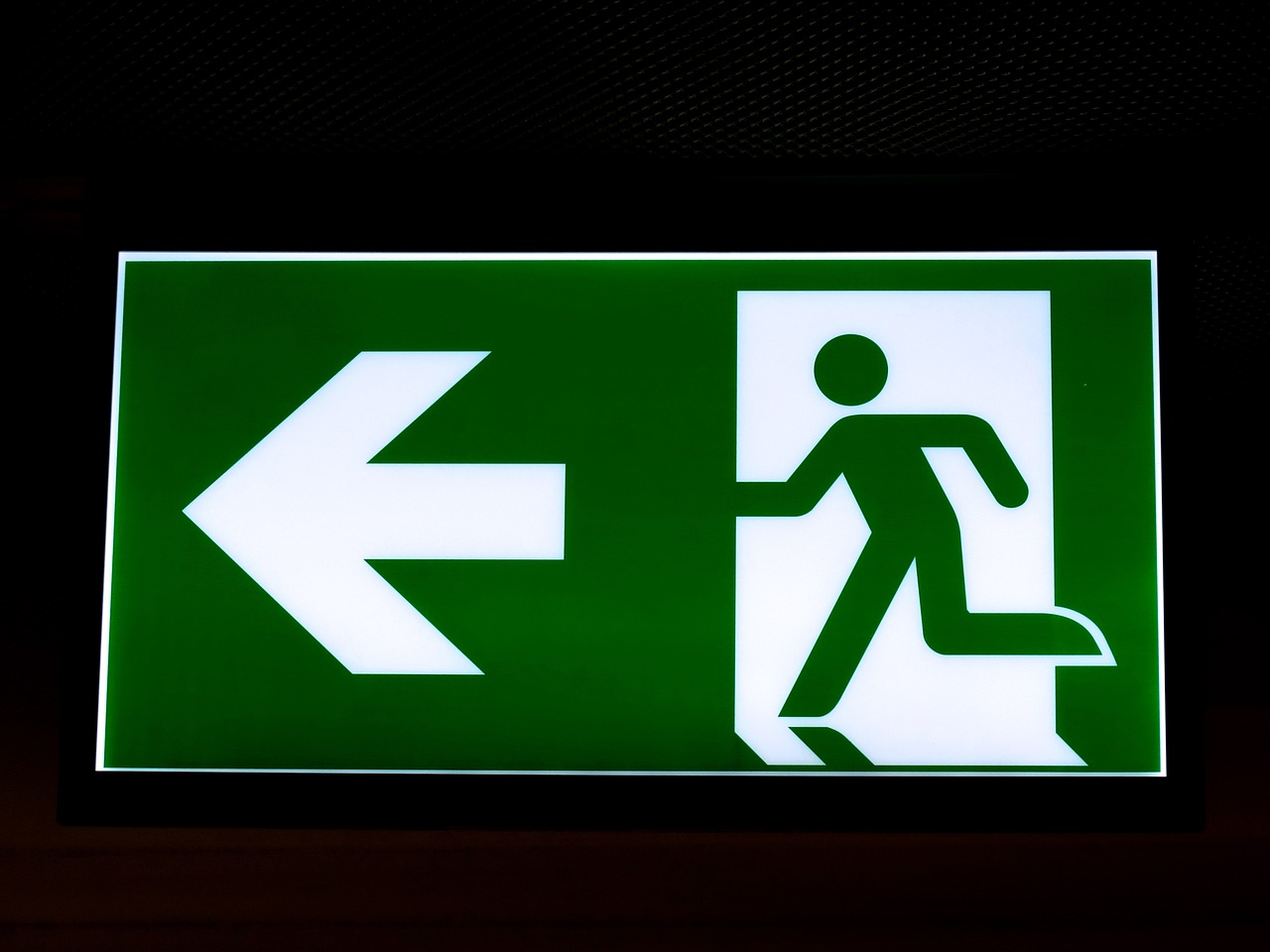
Monthly Contributions
When it comes to building your emergency fund, play a pivotal role. Imagine your savings as a garden; the more you water it, the more it flourishes. Regularly setting aside a portion of your income not only helps you accumulate funds but also creates a habit of saving that can be invaluable during times of crisis. So, how do you ensure that you’re consistently contributing to your emergency fund? Let’s dive into some strategies.
First, it’s essential to establish a realistic budget. Take a close look at your monthly expenses and identify areas where you can cut back. This could mean dining out less often or canceling subscriptions that aren’t essential. By trimming the fat from your budget, you can free up extra cash to funnel into your emergency fund. Consider creating a simple budget table to visualize your income and expenses:
| Category | Monthly Amount |
|---|---|
| Income | $3,000 |
| Rent/Mortgage | $1,200 |
| Utilities | $300 |
| Groceries | $400 |
| Entertainment | $200 |
| Savings Contribution | $500 |
| Remaining Balance | $400 |
Next, consider setting up an automatic transfer to your savings account each month. This way, you won’t have to remember to do it manually, and it will feel less like a burden. Treat your savings like a recurring bill that needs to be paid. You wouldn’t forget to pay your rent, right? The same principle applies here.
Additionally, it’s wise to set specific savings goals. For instance, aim to save a certain percentage of your income each month. This not only gives you a target to work towards but also provides a sense of accomplishment as you reach each milestone. You might start with a modest goal of 5% and gradually increase it as you become more comfortable with your budget.
Lastly, don’t forget to review your contributions regularly. Life changes, and so do your financial circumstances. If you receive a raise or cut back on certain expenses, consider increasing your monthly contributions accordingly. Remember, the more you save now, the more secure you’ll feel when disaster strikes.
In summary, making consistent monthly contributions to your emergency fund is crucial for financial stability. By budgeting smartly, automating your savings, setting clear goals, and regularly reviewing your progress, you can build a robust safety net that will serve you well in times of need.
- How much should I contribute to my emergency fund each month? Ideally, aim for at least 10-15% of your monthly income, but adjust based on your personal financial situation.
- Can I use my emergency fund for non-disaster-related expenses? It's best to reserve your emergency fund for true emergencies, but if you're in a pinch, assess the situation carefully.
- How can I make my savings grow faster? Look into high-yield savings accounts or consider investing in low-risk options if your emergency fund is sufficiently funded.
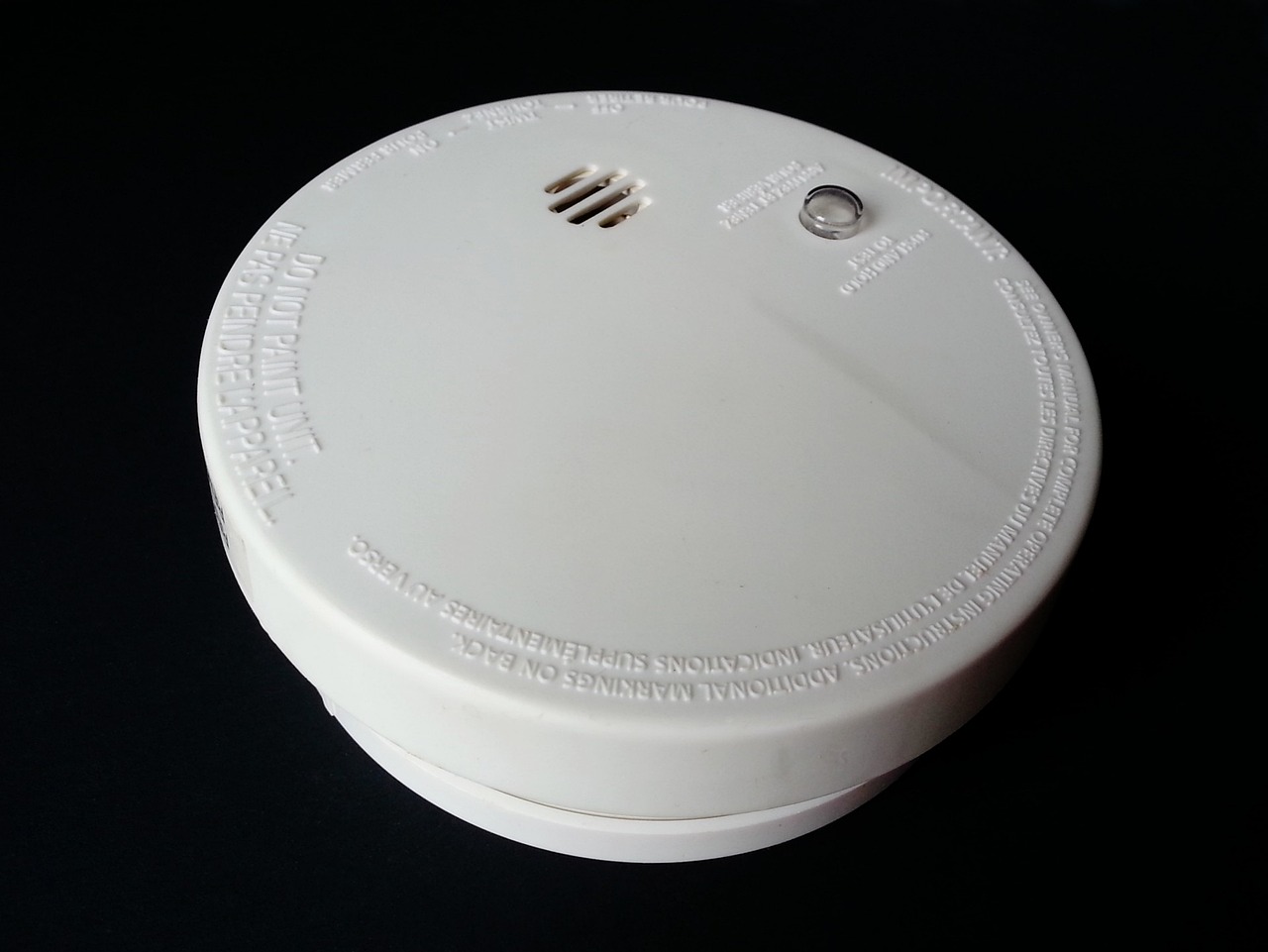
Accessing Funds Quickly
When disaster strikes, the last thing you want is to be fumbling around for cash or scrambling to access your savings. It's essential to have a plan in place that ensures your funds are readily available when you need them the most. Think of your emergency fund as a safety net, but not just any net—a highly accessible one! Here are some strategies to make sure your money is just a few clicks or a quick drive away.
First off, consider using a high-yield savings account or a money market account. These accounts not only offer better interest rates than traditional savings accounts but also provide easier access to your funds. With online banking, you can transfer money to your checking account within minutes, which can be a lifesaver in an emergency.
Another option is to maintain a small amount of cash at home. While it’s not advisable to keep all your savings in cash, having a few hundred dollars tucked away can be invaluable when immediate access is necessary. Just remember to store it in a secure location, like a safe or a hidden compartment, to prevent theft.
Moreover, consider setting up an automated transfer system. By scheduling regular transfers from your checking account to your emergency fund, you can build your savings without even thinking about it. This way, when disaster strikes, you won’t be left scrambling to gather funds. Instead, you’ll have a well-padded emergency fund ready to go!
Lastly, ensure that you have the right tools at your disposal. Download your bank's mobile app so that you can manage your accounts and transfer funds on the go. It’s like having a financial assistant in your pocket! And don’t forget about the importance of knowing your bank’s policies regarding withdrawals and transfers, especially during emergencies.
To sum it up, accessing your funds quickly during a natural disaster is all about preparation and smart planning. By utilizing high-yield accounts, keeping some cash on hand, automating your savings, and leveraging technology, you can ensure that your financial safety net is always ready when you need it. After all, when it comes to emergencies, every second counts!
- How much should I keep in my emergency fund? Aim for at least three to six months' worth of living expenses, but tailor it to your personal situation.
- What types of accounts should I use for my emergency fund? High-yield savings accounts or money market accounts are ideal due to their accessibility and better interest rates.
- Should I keep cash on hand? Yes, having a small amount of cash can be helpful, but don’t keep all your savings in cash due to the risk of theft.
- How can I ensure quick access to my funds? Use mobile banking apps, set up automated transfers, and understand your bank's withdrawal policies.
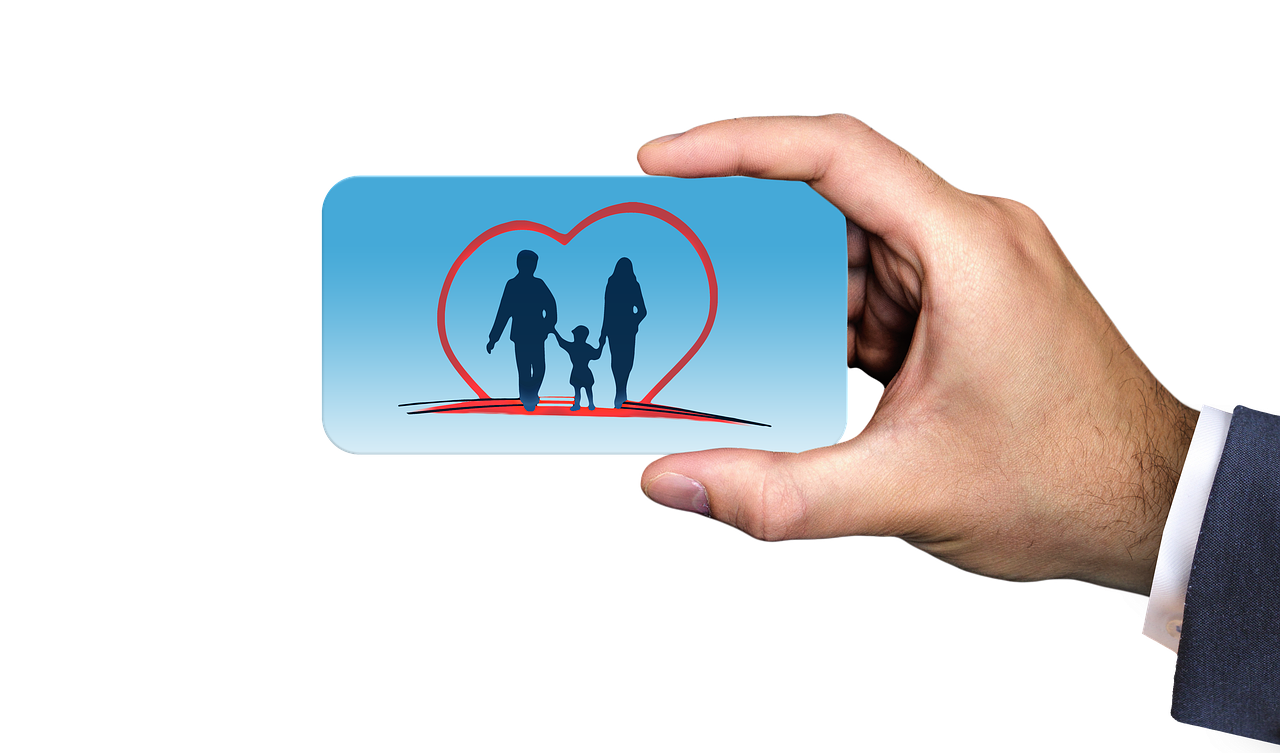
Insurance Coverage
When it comes to safeguarding your finances against the unpredictable nature of disasters, having the right is absolutely crucial. Imagine your home is hit by a hurricane or your business suffers from a flood; without adequate insurance, you could face devastating financial repercussions. So, what types of insurance should you consider? Let's dive into the essentials that can help shield your assets during such tumultuous times.
First and foremost, homeowners insurance is a must-have. This policy typically covers damages to your home and personal belongings due to disasters like fires, storms, or theft. However, it's important to note that standard homeowners insurance may not cover certain events, such as floods or earthquakes. Therefore, you might need to purchase additional flood insurance or earthquake insurance to ensure comprehensive coverage. Think of it as building a fortress around your finances—one that can withstand the storm.
For those running a business, business interruption insurance is another critical piece of the puzzle. This type of coverage can provide compensation for lost income if your business is forced to close due to a disaster. It's like a financial life vest that keeps your business afloat while you navigate the turbulent waters of recovery.
Now, let’s talk about how to evaluate your current insurance policies. Start by reviewing your coverage limits—are they sufficient to cover the full replacement value of your home or business? It's essential to ensure that your policy reflects the current market value and any improvements you’ve made. Additionally, don't hesitate to shop around and compare policies from different providers. Sometimes, a little competition can lead to better coverage at a more affordable price.
Finally, consider consulting with an insurance agent who specializes in disaster preparedness. They can help tailor a plan specific to your needs, ensuring that you’re not left high and dry when disaster strikes. Remember, the goal is to create a safety net that allows you to recover quickly and efficiently.
In conclusion, having the right insurance coverage is akin to having a trusty umbrella during a downpour—it may not stop the rain, but it will certainly keep you dry. So, take the time to assess your insurance needs, update your policies, and ensure you’re prepared for whatever Mother Nature may throw your way.
- What types of disasters are typically covered by homeowners insurance? Most standard policies cover damage from fire, theft, and certain types of water damage, but may exclude floods and earthquakes.
- How can I determine the right amount of coverage for my property? Consult with a professional appraiser or your insurance agent to assess the current market value and replacement costs of your home or business.
- Is it worth getting additional coverage for natural disasters? Yes, if you live in an area prone to specific natural disasters, additional coverage can provide peace of mind and financial protection.

Documenting Important Information
When disaster strikes, the last thing you want to worry about is whether you can find your important financial documents. Keeping records of essential information is crucial, not just for peace of mind but also for ensuring a smooth recovery process. Imagine waking up to a natural disaster and realizing that all your important papers are scattered or, worse, lost. To avoid this scenario, it’s vital to have a systematic approach to documenting and securing your financial information.
The first step in this process is to identify which documents are essential. These can include:
- Bank statements
- Insurance policies
- Tax returns
- Property deeds
- Investment records
- Identification documents (like passports and driver's licenses)
Once you have a comprehensive list of important documents, the next question is: how do you store them? You have two main options: digital and physical copies. Each method has its own set of advantages and disadvantages. For instance, digital copies can be easily backed up and accessed from anywhere, while physical copies can be more reliable in case of power outages or technology failures. It’s wise to have a combination of both to ensure you’re covered from all angles.
Let’s break down the pros and cons of each method:
| Method | Pros | Cons |
|---|---|---|
| Digital Copies |
|
|
| Physical Copies |
|
|
Regardless of the method you choose, it’s essential to regularly review and update your financial documents. Life changes, and so do your financial circumstances. You might acquire new assets, change jobs, or even relocate. Each of these events can impact your financial documents, so it’s a good idea to set a reminder to review your records at least once a year. This way, you ensure that everything is up-to-date and ready to go when you need it most.
During your review, ask yourself a few key questions:
- Are all my insurance policies current and reflective of my assets?
- Do I have copies of my latest bank statements and tax returns?
- Have I updated my emergency contacts and important phone numbers?
By keeping your documents organized and regularly updated, you’re not just preparing for the worst; you’re also giving yourself peace of mind. You’re like a captain steering a ship through stormy seas—you want to ensure that all your navigational tools are in good working order. So, take the time to document important information, and you’ll be better equipped to handle whatever comes your way.
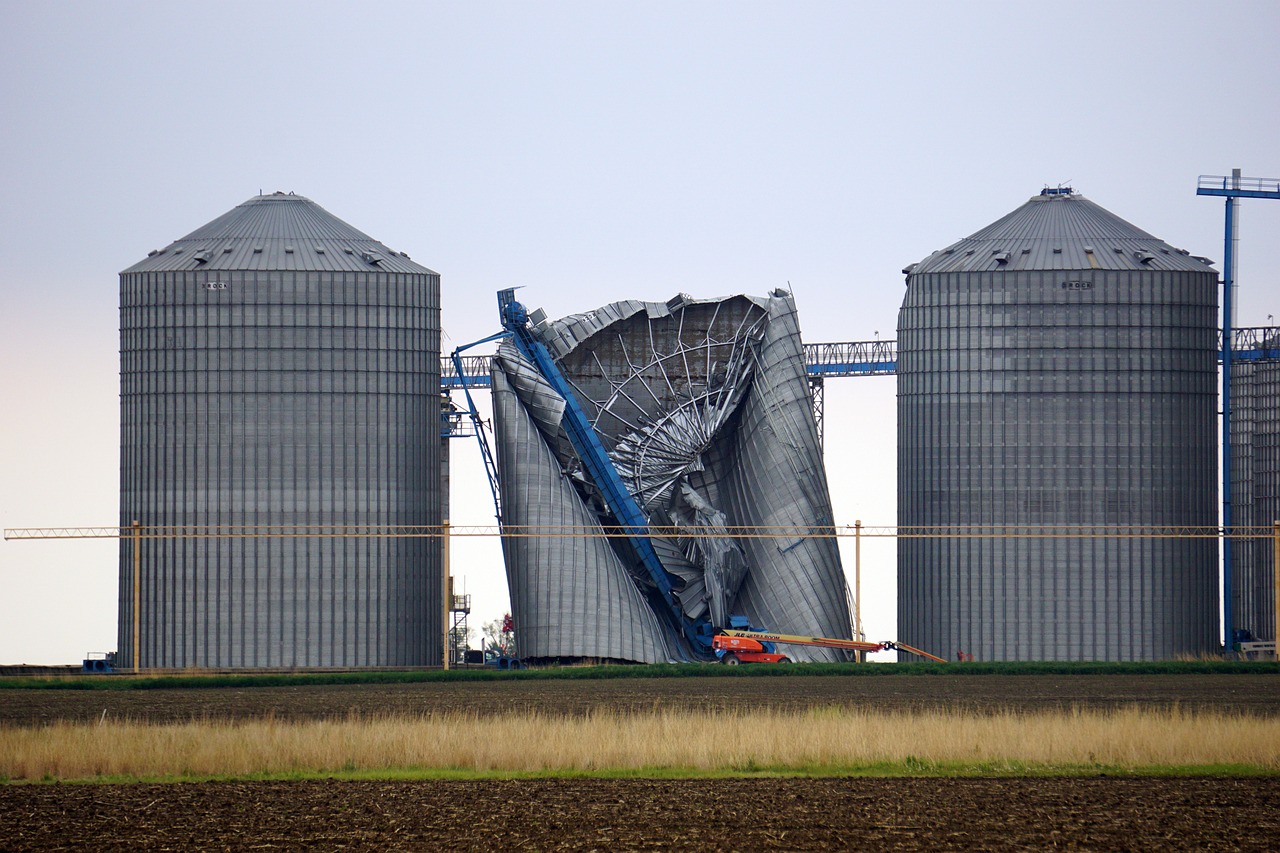
Digital vs. Physical Copies
When it comes to safeguarding your important financial documents, the debate between digital and physical copies is more than just a matter of preference; it's about practicality and security. Imagine you're faced with an unexpected natural disaster. Your home may be at risk, and your financial documents could become inaccessible. This is where the choice between digital and physical copies becomes critical.
Digital copies offer a level of accessibility that physical copies simply can’t match. With the right cloud storage solutions, you can access your important documents from anywhere, at any time. This means that if you need to file a claim or prove your identity, you won’t be scrambling to find that one piece of paper buried under a pile of debris. However, with digital documents, you must also consider the risks of cyber threats. Data breaches and hacking are real concerns, especially when sensitive information is involved.
On the flip side, physical copies provide a sense of security that many people find comforting. Having hard copies of your documents can be reassuring, especially if you're worried about power outages or internet access during a disaster. You can store these documents in a fireproof safe or a secure location, ensuring they remain intact. However, the downside is that physical documents can be easily damaged or lost in a disaster, leaving you vulnerable.
Ultimately, the best approach might be a combination of both methods. Consider storing digital copies of your essential documents in a secure, encrypted cloud service while also keeping physical copies in a safe location. This way, you’re not putting all your eggs in one basket. Here’s a quick comparison to help you decide:
| Aspect | Digital Copies | Physical Copies |
|---|---|---|
| Accessibility | Access from anywhere with internet | Limited to physical location |
| Security | Vulnerable to cyber threats | Can be lost or damaged |
| Storage Space | Requires digital storage | Takes up physical space |
| Cost | Often low or free | Printing and storage costs |
In conclusion, the choice between digital and physical copies ultimately depends on your personal circumstances and preferences. By weighing the pros and cons of each method, you can develop a strategy that best suits your needs. Remember, when disaster strikes, having your important documents readily accessible—whether in digital or physical form—can make all the difference in your recovery process.
Q: What documents should I keep copies of?
A: Important documents include identification, insurance policies, bank statements, tax returns, and property deeds. Keep copies of anything that could be crucial for your financial recovery.
Q: How can I ensure my digital copies are secure?
A: Use strong passwords, enable two-factor authentication, and consider encrypting sensitive files. Regularly back up your data to ensure you don't lose access.
Q: How often should I update my financial documents?
A: It's advisable to review and update your documents at least once a year or whenever there are significant changes in your financial situation.

Regular Updates and Reviews
When it comes to safeguarding your financial future, of your important documents are not just a good idea—they're essential! Think of your financial documents as living entities; they evolve and change over time, just like your life circumstances. Whether it’s a new job, a change in income, or even a shift in your family dynamics, these factors can significantly impact your financial landscape. By reviewing your documents regularly, you ensure that they accurately reflect your current situation and needs.
So, how often should you conduct these reviews? A good rule of thumb is to check your financial records at least once a year. However, if you experience any major life changes, it’s wise to revisit your documents immediately. This proactive approach helps you catch any discrepancies and make necessary adjustments before a disaster strikes. Imagine you’ve just moved to a new home; if your insurance policy still lists your old address, you could face serious complications when filing a claim!
During your review, consider the following key documents:
- Insurance Policies
- Bank Statements
- Investment Accounts
- Emergency Fund Details
Each of these documents plays a crucial role in your financial health. For instance, if you’ve upgraded your home or purchased new valuables, ensuring that your insurance coverage reflects these changes is vital. Similarly, reviewing your emergency fund can help you assess whether it’s sufficient to cover your needs in the event of a disaster.
Moreover, don’t forget to keep your contact information updated with financial institutions. This simple step can make a world of difference in ensuring that you receive timely notifications about your accounts, especially during emergencies. A quick phone call or online update can save you from potential financial headaches down the line.
Finally, consider utilizing technology to assist you in this process. Many financial apps and tools allow you to set reminders for regular reviews, making it easy to stay on top of your financial health. Embracing these digital solutions can streamline your efforts and provide you with a clear overview of your financial situation at a glance.
Q: How often should I review my financial documents?
A: It’s advisable to review your financial documents at least once a year or whenever you experience significant life changes.
Q: What documents should I prioritize during my review?
A: Focus on insurance policies, bank statements, investment accounts, and details about your emergency fund.
Q: Can technology help me manage my financial reviews?
A: Yes! Many financial apps offer reminders and tools to help you keep track of your financial health.
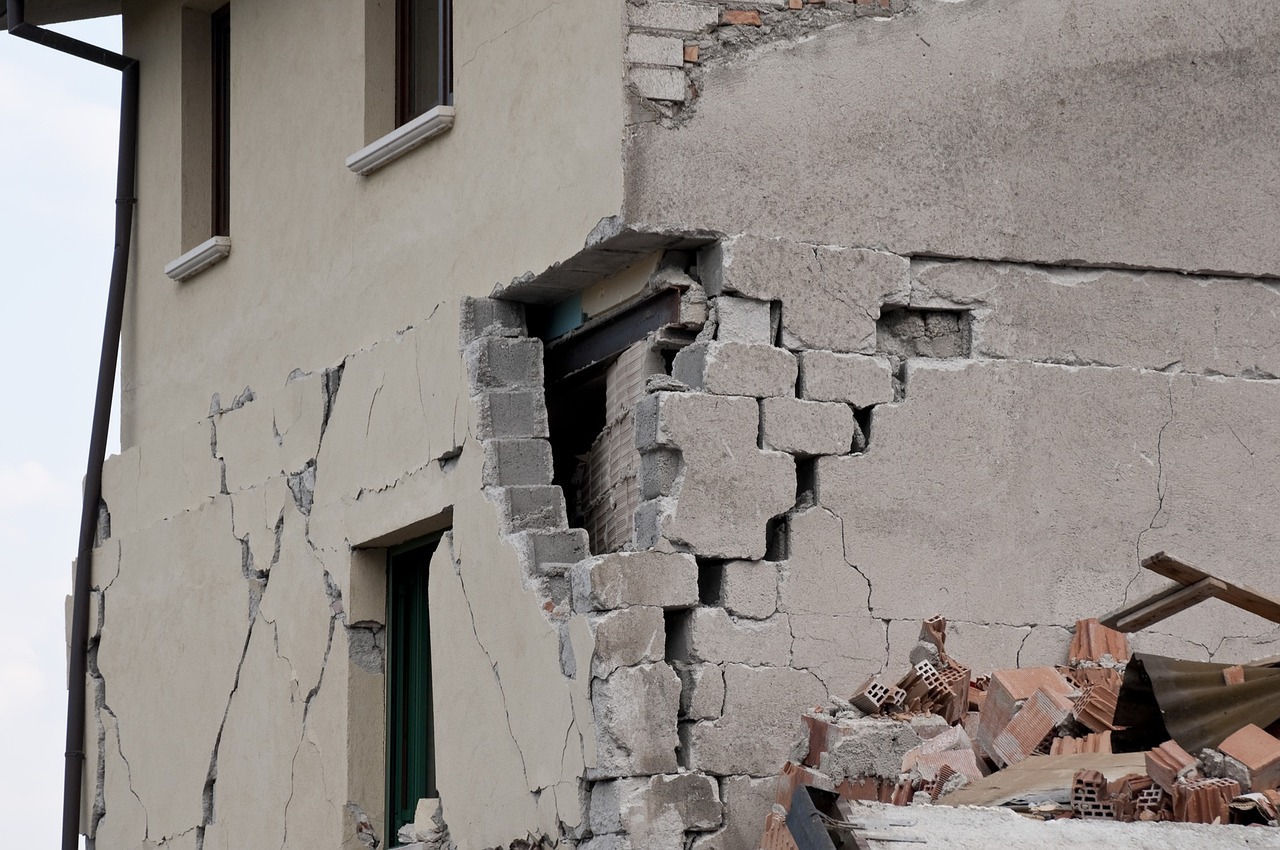
Post-Disaster Recovery Strategies
Recovering from a natural disaster can feel like climbing a steep mountain while the ground beneath you is still shaking. It’s not just about picking up the pieces but also about strategically rebuilding your financial life. The journey may seem daunting, but with the right strategies in place, you can navigate this challenging period effectively. The first step in your recovery process is to assess the damage—not just to your property but to your finances. Understanding where you stand financially will help you make informed decisions moving forward.
One of the most critical components of your recovery is budgeting. After a disaster, your financial situation may have changed dramatically. You might have lost income, faced unexpected expenses, or even had to relocate. Start by listing all your current income sources and expenses. This will give you a clear picture of what you can afford and where you might need to cut back. Remember, it’s about prioritizing essentials like food, shelter, and healthcare, while postponing non-essential expenses until you’re back on your feet.
Another important aspect of recovery is seeking assistance. Many local, state, and federal programs provide financial aid to those affected by disasters. Don’t hesitate to reach out for help; it’s a sign of strength, not weakness. Here’s a quick rundown of potential sources of assistance:
- Federal Emergency Management Agency (FEMA): Offers various forms of aid, including grants and low-interest loans.
- Local charities and non-profits: Many organizations provide immediate relief and long-term recovery assistance.
- Your insurance provider: File claims as soon as possible to expedite the recovery process.
Once you’ve stabilized your immediate situation, it’s time to re-evaluate your financial plan. This is not just about returning to your previous financial state; it’s about building a stronger foundation for the future. Consider adjusting your long-term financial goals based on your new circumstances. For instance, if you’ve had to dip into your emergency fund, make it a priority to replenish that fund as soon as possible. Set a timeline for when you want to achieve this, and break it down into manageable steps.
Additionally, consider investing in financial education. The aftermath of a disaster is a perfect time to learn more about personal finance, budgeting, and investing. Understanding these concepts can empower you to make better financial decisions moving forward. There are numerous resources available, from online courses to local workshops, that can help you gain this knowledge.
Lastly, don’t forget to maintain a positive mindset throughout the recovery process. Yes, it’s tough, and there will be days when you feel overwhelmed. But remember, every step you take towards rebuilding your finances is a step towards regaining control of your life. Surround yourself with supportive friends and family, and don’t hesitate to share your struggles and successes with them. After all, recovery is not just about finances; it’s about healing and moving forward.
Q: How long does it typically take to recover financially from a natural disaster?
A: The recovery time can vary widely depending on the severity of the disaster and your personal financial situation. On average, it can take several months to a few years to fully recover.
Q: What should I do if I can’t pay my bills after a disaster?
A: Contact your creditors immediately to explain your situation. Many companies offer hardship programs or can provide temporary relief. Additionally, seek assistance from local charities or government programs.
Q: How can I ensure I’m better prepared for future disasters?
A: Building a robust emergency fund, reviewing your insurance coverage, and keeping important documents organized can help you be better prepared for any future disasters.
Frequently Asked Questions
-
What financial risks should I be aware of during a natural disaster?
Natural disasters can lead to unexpected expenses, loss of income, and damage to property. It's essential to understand that these events can disrupt your financial stability. Being aware of risks like increased medical costs, loss of business revenue, or the need for temporary housing can help you prepare better.
-
How can I build an effective emergency fund?
Building an emergency fund starts with setting realistic savings goals. Aim to save at least three to six months' worth of living expenses. Regular monthly contributions, even if small, can accumulate over time. Consider automating your savings to ensure consistency and make it easier to reach your financial goals.
-
What types of insurance should I consider for natural disasters?
It's crucial to have the right insurance coverage to protect your assets. Look into homeowners or renters insurance, flood insurance, and even business interruption insurance if you're a business owner. Regularly reviewing your policies ensures you have adequate coverage for potential disasters.
-
How should I document important financial information?
Keeping records of essential financial documents is vital. Organize your documents digitally and in physical form, ensuring you have backups in both formats. Regularly update these records to reflect any changes in your financial situation, like new accounts or changes in policy coverage.
-
What steps can I take for post-disaster recovery?
After a disaster, start by assessing your financial situation and creating a budget. Seek assistance from local organizations or government programs that offer support. Re-evaluate your financial plan to accommodate any changes in income or expenses, and make adjustments to your emergency fund as needed.

